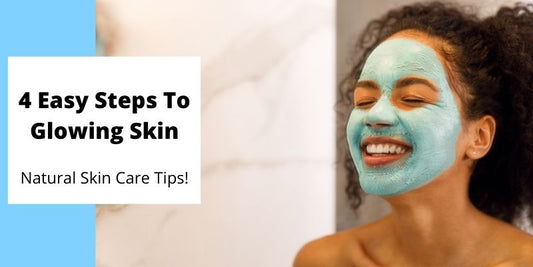8 Min Read
The ULTIMATE Natural Sun Care Guide

With summer here, it is important to be prepared and remind ourselves about how to be safe while enjoying the sun! Keep reading this post to learn best practices when choosing a safe sunscreen as well as other sun safety tips!
Our bodies were made to love and flourish in the sunlight. The UV rays from the sun help to convert Vitamin D precursors in the skin (Vitamin D2) into the active form of Vitamin D (Vitamin D3). Getting enough Vitamin D through sun exposure plays such an important role in our mood, sleep, energy, motivation, immune function, hormone production and overall happiness. It also plays an important role in conditions like: cancer, heart disease, type 2 diabetes, hypertension, obesity, poor immune function and depression.
Despite all the wonderful things the sun can do for us, it does not come without any risks. Sun risks include: aging skin and increased risk of skin cancers. Every year, about 80,000 Canadians are diagnosed with skin cancer. It is therefore important to stay educated on sun safety practices to reduce the risk of sun damage.
One of the most important ways we can stay safe in the sun is to wear sunscreen. The skin is the body’s largest organ and allows for a good barrier to the external world but also allows for significant absorption while using sunscreen, making it important to choose wisely.
What Exactly Does Sunscreen Do?
The purpose of sunscreen is to block the sun’s ultraviolet (UV) radiation from entering the body. It is when UV radiation enters the skin that damage is caused to the body.
The sun emits both UVA and UVB rays. Most sunscreens only block UVB rays and allow UVA rays to enter the skin. UVA are the rays that cause tanning, prematurely age your skin which leads to wrinkles and age spots while UVB burns the skin. Too much exposure to both UVA and UVB rays can cause skin cancer.
There are two broad categories of sunscreen ingredients: chemical and mineral/physical filters.
The most common sunscreens contain chemical filters (ex. Oxybenzone, avobenzone) which are easily absorbed into the body and lead to hormone disruption. Mineral filters include: titanium oxide and zinc oxide which block both UVA and UVB rays and form a shield on top of the skin to prevent deep absorption.
What is SPF?
Sun protective factor (SPF) measures how well sunscreen protects against UV B rays. It is calculated based on how long it takes to sunburn skin that is treated with sunscreen. There is no way to report UVA absorption. So always pick a broad spectrum sunscreen as this can protect against both UVA and UVB radiation.
What Are Some Pros/Cons Of Sunscreen Use?
PROS Of Sunscreen:
- Regular and proper sunscreen use drastically decreases rate of skin cancer
- Sunscreen can combat aging and decrease the appearance of wrinkles and age spots
CONS of Sunscreen:
- Since sunscreens are applied over large areas of the skin, the ingredients are quickly absorbed and can find their way into blood, urine and breast milk.
- Harmful chemicals in the sunscreens can be absorbed into the body and act as endocrine disturbers
** Important to note that these cons only pertain to chemical sunscreens and not mineral ones like zinc oxide
What To Avoid In Your Sunscreen?
- Watch for words like 'natural’ or ‘organic’ and this doesn’t always mean the product contains the best ingredients
- Avoid chemicals that the Environmental Working Group (EWG) has cautioned against:
- Oxybenzone - Most often found in sunscreens
- Avobenzone
- Homosalate
- Octinoxate
- Octocrylene
- Cinoxate
- Dioxybenzone
- Padimate
- Sulisobenzone
- PABA
- Trolamine salicylate
- The David Suzuki Foundation also recommends avoiding common cosmetic ingredients like: parabens, phthalates, polyethylene glycol (PEG), and sodium laurel sulphate
- Bigger isn’t better - Avoid SPF > 50:
- Don’t fall for high SPF labels, often times this is very misleading
- Anything higher than SPF 50+ can entice you to stay in the sun longer. During this longer exposure, your skin may still be getting damaged from the UV rays even if you are not feeling burnt
- Avoid sunscreen sprays and powders
- Even though these are easy to use, there are very few that are considered safe for EWG rating
- Sprays come with a risk of inhaling these chemicals which are not safe to breathe in
- Avoid sunscreen with Vitamin A, also known as retinyl palmitate
- Research shows that creams with high amounts of Vitamin A can increase your chance of developing lesions or tumours
What To Look For When Shopping For Sunscreen?
Picking a good quality sunscreen is very important. It is best to pick a broad spectrum sunscreen as mentioned earlier, one that offers long-lasting protection and one with ingredients that does not cause long term health damage.
- Look for sunscreens that are mineral-based to minimize absorption into the skin
- Chose safe/mineral ingredients like:
- Titanium dioxide
- Zinc oxide
- Avobenzone at 3%
- Pick a sunscreen with an SPF between 15-50+
Top Rated Sunscreens:
To see all sunscreen options at vitamart.ca click HERE
How To Properly Apply Your Sunscreen:
The most common mistake that people make when using sunscreen is improper application. Sunscreen needs to be applied 20 minutes before sun exposure as this is the amount of time it takes for the sunscreen to be absorbed into the skin. In terms of how much to apply, it should form a thin protective film on the skin’s surface, about 1 ounce. Always remember to reapply sunscreen after going in the water or after sweating.
Other Important Tips for Staying Safe In The Sun:
The best protection against too much harmful UV rays is a combination of clothing, shade, good timing and sunscreen. Keep in mind that sunscreen ALONE does not prevent skin cancer. It is important to combine safe sunscreen with time spent in the shade, with a hat and clothes. Here is a checklist to follow:
- Cover up
- This includes, t-shirts for adults, sun suits for kids, hats and shorts
- There are some lines of light clothing that provide SPF to protect against UVA and UVB
- Drink water
- Hydration while spending time in the sun can prevent heat strokes
- Look for Shade
- Make an effort to find these spots whether it is under a tree or umbrella
- Sunglasses
- Sunglasses can protect your eyes from UVB radiation that may cause cataracts
- Timing
- Ideal time to be safe in the sun and to get your Vitamin D is early in the morning or late afternoon. UV radiation peaks mid-day. It is estimated that 15-20 minutes of exposure is recommended to get your daily dose of Vitamin D but also avoids burning
- Avoid the sun from 10 am-4 pm
- Wear Sunscreen
- The Environmental Working Group (EWG) releases an annual sunscreen guide with the low down on the year’s best and worst sunscreens - use the tips above to help pick out your safe sunscreen
- Watch out for pink skin
- This means your skin needs a break from the sun
- Sunscreen chemicals tend to wash off or rub on towels and clothing so make sure to keep reapplying about every 2 hours
- Consume a diet that is high in fruits and veggies
- This helps to maximize the amount of antioxidants that are available in the body to fight off free radicals generated by UV radiation which increases our bodies sun protection factor (SPF) naturally!
- Increase sun exposure throughout the year
- It is important to maintain your skin health every day of the year and not just in the summer months. This allows to build the skin’s resilience so when the skin is faced with UV rays it can repair itself
- Start a few minutes each day about 10-20 mins without sunscreen early in the spring and gradually increase the amount of time you spend in the sun each day. Best time for this is in the morning before 10 am
- This also allows you to gradually produce more melanin in your skin, which is known as ‘tan’. Melanin production will protect you from stronger UV rays.
- Use natural oils when producing your vitamin D from the sun
- Use oils like coconut oil, jojoba oil and sea buckthorn oil which naturally protect the skin from radiation damage
- Antioxidants like Vitamin C, Vitamin E and minerals like zinc and selenium can offer protection against oxidative damage which prevents uneven skin pigmentation, wrinkles and premature signs of aging
Sun Safety Tips For Kids
Did you know that sunburns in children can actually double the risk of developing skin cancer? Research is clear that intermittent, intense sun exposure in childhood is linked to melanoma which is the most dangerous type of skin cancer. It is important to prevent sunburns in children. Children who have light coloured skin, eyes and play in the sun for long periods are at a higher risk.
- The best sun safe tip for kids is to always make sure they are wearing sun protecting gear like: hats and t shirts
- Childrens skin is more sensitive than adults. It is for this reason important to apply a little bit of sunscreen on their hands before lathering it all over to make sure no reactions occur
- Make sure to reapply sunscreen often if they are in the water or sweating
To see a list of all of our kids sunscreen at vitamart.ca click HERE
Sun Safety Tips for Infants
Infants < 6 months should be kept out of the sun as much as possible. At this age there is very little melanin production. When you take your baby outside make sure to:
- Protective clothing and a hat
- Always make shade for them: ex. Stroller canopy or umbrella
- AVOID going out in the sun during peak hours mid day (10 am - 4 pm)
How To Speed Up Recovery From Sunburns
A sunburn is a burn to the skin that is caused by exposure to UV rays of the sun - specifically UVB radiation. It can appear as a red, painful skin lesion that is also hot to touch. Sun burns will usually set in 2-6 hours after exposure, peaks at 12-36 hours and fades after about 72 hours.
After sunburns, negative effects on the body include: inadequate DNA repair, decreased immune response, damage to melanin cells and free radical damage.
It is helpful to use products that will help to cool and soothe the burn. You want to avoid lotions and creams, which can actually lock in the heat. Try the following tips post sunburn:
- Hydrate - Drinking a lot of water post burn can help the body to recover quicker
- Aloe Vera Gel - This is a soothing plant which can help to cool the burn
- Find a pure aloe vera gel and mix in some sea buckthorn and lavender to heal up the healing
- Avoid any perfumes from soaps, bath bombs, as this will be more painful and slow down healing
- Apply some witch hazel
- To reduce inflammation and relieve sunburns
- Shea butter
- Apply to affected areas as this can help to restore moisture in the area
Overall, enjoy your time outside, just be safe! Spending too much time in the sun increases your risk for skin cancer and early skin aging. To decrease this risk, regularly use sunscreen, limit time in the sun, wear hats, light clothing and reapply often. Be sure to choose the tips presented in this article when picking out your safe sunscreen!



